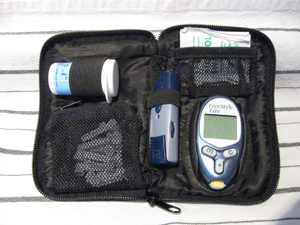TEL 1-844 303-1900


MEDICAL TRAVEL TIPS
- emergency travel health consultation in toronto
- health advisory for travel in toronto

- We advise you to take your medication in pharmacy labelled containers or cartons.
- Take double the quantity of medication you think you will need. We advise you to take half of this quantity of medication in your hand baggage (carry on). Place the rest in a different piece of luggage. In the event that one of the bags is lost or stolen, you will still have enough medication for your trip
- Airlines cannot refrigerate medication for you. If your medicines need to be kept cool, a cool bag or vacuum flask may be appropriate or you should discuss options with your pharmacist.
- If you are traveling with medical equipment, you may need to let the airline know in advance depending on the type of equipment (see separate list below).
- Medical clearance is required for the use of most medical equipment as we need to ensure that you are fit to fly.
- It is not possible to guarantee power supply while on board, so equipment must be capable of being battery-operated.
- In normal circumstances, authorized medical equipment can be used on board except during taxi, take-off, approach and landing.
Medical equipment for use at your destination

You will need to make special arrangements to take essential medical equipment with you for use at your destination, which can be arranged through your booking agent.
Nebulisers
Battery-operated nebulisers can be used in-flight with the exception of take-off and landing. It is not possible to supply mains power.

CPAP machine
- Medical clearance is not required for the carriage or use of CPAP machines (used in the treatment of sleep apnea) as fitness to travel will not be in doubt.
- CPAP machines can be plugged into a laptop power-point, where available, with a suitable adaptor.
- Maximum power output from the laptop points is 75 Watts and, if your equipment draws more than this, the outlet will be automatically deactivated.
- We cannot guarantee that any of the laptop points will be serviceable. If you intend to use one in flight, we recommend that you use a dry-cell battery-operated device.
Portable dialysis machines
In most circumstances, you can take equipment with you. If it is likely that you will exceed baggage allowances, you should discuss it with Reservations in advance of travel and well before you arrive at the airport; otherwise, you may be liable to additional baggage charges.
Portable Oxygen Concentrators
- Portable Oxygen Concentrators (POC) that are approved by the Federal Aviation Administration (FAA) can be used on-board. The POC is included in your cabin baggage allowance.

Flying after an illness or an operation
You must be extra careful about flying if you've had an operation or a serious illness, as travel can be stressful. It is wise not to travel if you don't feel up to it.
The following guide outlines the minimum time before it is advisable to travel after treatment or if you need to highlight your condition to the airline before traveling.
| Type of surgery | Travel allowed after (number of days) |
|---|---|
| Major chest, abdominal or cranial surgery Middle ear surgery | 10 days |
| Cataract or corneal laser or other eye surgery Introduction of gas into the eye for retinal detachmen |
1 day 6 days Contact the airline, if the gas has not been resolved. Air retained in body cavities expands in flight. |
| Tonsillectomy | 6 days |
| Appendectomy or abdominal keyhole surgery |
4 days |
| Heart conditions | |
| Angioplasty | If the procedure is straightforward, you can usually fly after 3 to 5 days but you should discuss it with the airline. |
| Heart surgery | If you feel well enough and really need to fly, you can travel after 10 days but 4 to 6 weeks is preferable. |
| Heart attack | You should not fly
|
| Angina sufferers | As long as you don't have frequent attacks, there is no restriction. Remember to take your medication into the cabin with you. |
| Chest conditions | |
| Stable asthma | This is not usually a problem as long as you take your inhalers with you. |
| Chronic bronchitis, emphysema or other forms of chronic obstructive pulmonary disease (COPD) | If you can walk (without extra oxygen) for 55 yards (50m)
without getting breathless, you should be fit to fly.
If you can't walk this far:
|
| Pneumothorax (deflated lung) | The condition has to be fully resolved for at least a week before flying, but you must contact the airline if you've had one in the month before you fly. |
| Neurological conditions | |
| Stroke | If your symptoms are stable or improving and you feel well
enough:
|
| Epilepsy | You should not travel within 24 hours of a grand mal fit (seizure). |
| Ear conditions | |
| Ear or sinus infection | You should consider not flying if:
|
| Other conditions | |
| Broken bone | If you have broken a bone and have been fitted with a
plaster cast:
|
| Anaemia | If you have a haemoglobin below 7.5g/dl, particularly if it is of recent onset. |
| Infectious disease | The World Health Organization prohibits airlines from carrying passengers suffering from an infectious disease whilst they are contagious. Infectivity periods vary between illnesses and further information can be obtained from your doctor. |
Travelers' thrombosis (or DVT)
Travelers' thrombosis is better known as deep venous thrombosis (or DVT) and is the clotting of blood that usually occurs in the lower legs. DVT can occur in anyone at any time, although some individuals are more at risk than others. Recent research has confirmed that anyone seated in an aircraft, car, bus or train for more than four hours may also be at increased risk.
Factors increasing the DVT risk include:
- age over 40
- previous DVT or pulmonary embolism
- history of DVT or pulmonary embolism in a close family member
- use of estrogen therapy, oral contraceptives ('the Pill') or hormone- replacement therapy (HRT)
- pregnancy
- recent surgery or trauma, particularly to the abdomen, pelvic region or legs
- cancer
- some inherited blood-clotting abnormalities and other blood disorders.

You can reduce the DVT risk with the following advice:
- drink adequate fluids
- avoid smoking
- avoid beverages that contain alcohol and caffeine before and during your flight
- avoid crossing your legs while seated
- walk around the cabin whenever you can
- stand up in your seat area and stretch your arms and legs
- carry out the foot and leg exercises advised in the well-being section of the High Life in-flight magazine and on the in-flight entertainment system
- wear loose-fitting, comfortable clothes when traveling.
- If you have any of the additional risk factors listed, you should seek medical advice before traveling.
- In particular, you should discuss whether compression stockings would be appropriate and if anti-coagulant medication is necessary.
